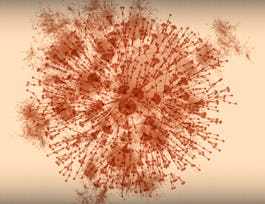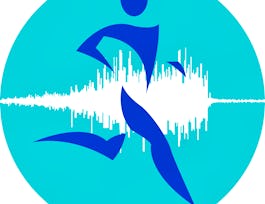Welcome! In this course learners will develop expertise in basic magnetic resonance imaging (MRI) physics and principles and gain knowledge of many different data acquisition strategies in MRI. In particular, learners will get to know what is magnetic resonance phenomenon, how magnetic resonance signals are generated, how an image can be formulated using MRI, how soft tissue contrast can change with imaging parameters. Also introduced will be MR imaging sequences of spin echo, gradient echo, fast spin echo, echo planar imaging, inversion recovery, etc.



(428 reviews)
Skills you'll gain
- General Medicine
- Information Management
- Data Engineering
- General Medical Tests and Procedures
- Image Analysis
- Radiology
- Data Analysis
- Data Transformation
- Electrical Engineering
- Data Mapping
- Electrical and Computer Engineering
- Statistical Analysis
- Sampling (Statistics)
- Data Integration
- Data Wrangling
- Digital Communications
- Data Processing
- Data Science
- Data Collection
- Extract, Transform, Load
Details to know

Add to your LinkedIn profile
6 assignments
See how employees at top companies are mastering in-demand skills


Earn a career certificate
Add this credential to your LinkedIn profile, resume, or CV
Share it on social media and in your performance review

There are 6 modules in this course
Welcome! This first week you will be introduced to the course and key principles of mri. You will learn what is mri and the major components of mri.
What's included
2 videos1 assignment
This week, you will explore what is magnetic resonance phenomeon. We will also guide you to what is relaxation and how RF apply to cause magnetic resonance.
What's included
4 videos1 assignment
In this module, you will learn signal processing theory. You will be exposed to the most important concepts in mri which contain fourier transform and nyquist sampling therom.
What's included
5 videos1 assignment
In lecture 4, we will expose you to how to sequence gradient pulses to get an mr image. You will also learn about sequence gradient pulses which include slice selection, frequency encoding and phase encoding.
What's included
5 videos1 assignment
In this week, learners will get to know how soft tissue contrast can change with imaging parameters. We will also guide you what is field of view and how to measure resolution.
What's included
5 videos1 assignment
In this module, you will learn about mri data acquisition strategies. Also, you will be exposed to MR imaging sequences of spin echo, gradient echo, fast spin echo, echo planar imaging, and inversion recovery.
What's included
5 videos1 assignment
Instructor

Why people choose Coursera for their career




Learner reviews
428 reviews
- 5 stars
67.44%
- 4 stars
22.32%
- 3 stars
6.74%
- 2 stars
2.09%
- 1 star
1.39%
Showing 3 of 428
Reviewed on Jun 16, 2020
Very in depth course. It's easier to read the course than try to understand the video/audio. At least it was for me.
Reviewed on Jun 12, 2020
Wonderful course. I enjoyed learning. Explanation and presentations were also good. Thank you professor.
Reviewed on Dec 26, 2020
Excellent Course, I found it very comprehensive and useful. Sometimes difficult expecially the math parts considering my background as a Neuroradiologist. Thank You.
Recommended if you're interested in Health

University of Illinois Urbana-Champaign

University of California, Irvine

University of Colorado Boulder

Open new doors with Coursera Plus
Unlimited access to 10,000+ world-class courses, hands-on projects, and job-ready certificate programs - all included in your subscription
Advance your career with an online degree
Earn a degree from world-class universities - 100% online
Join over 3,400 global companies that choose Coursera for Business
Upskill your employees to excel in the digital economy



